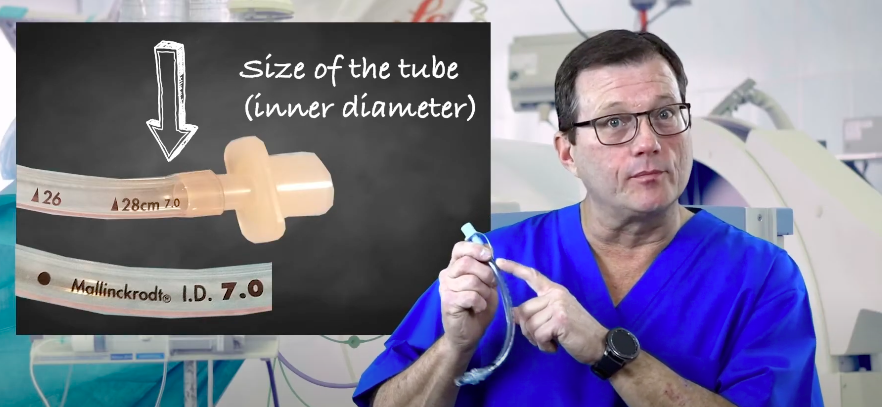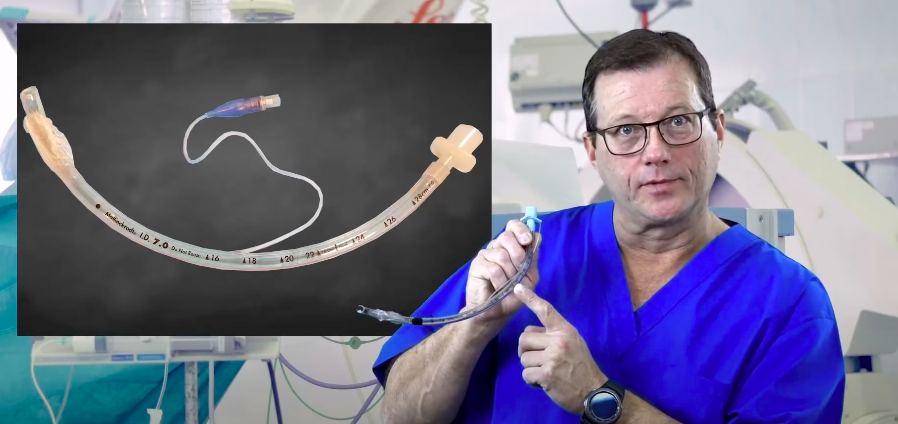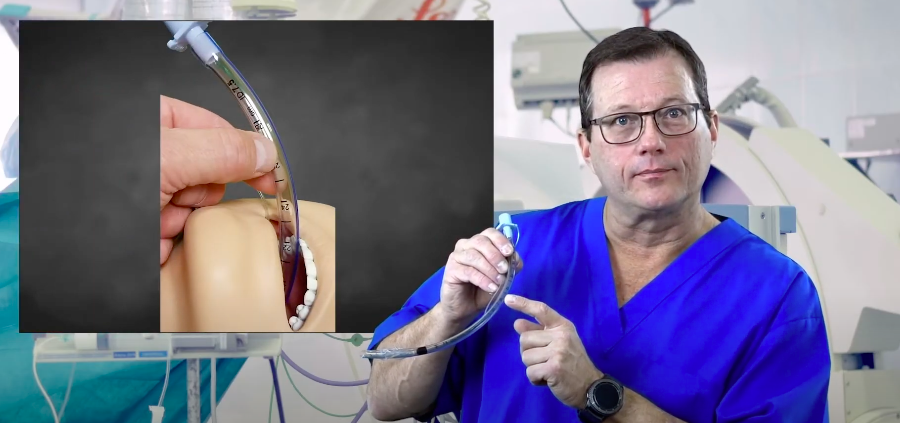Inserting the ET Tube: Tips for Calculating Depth
ACLS Certification Association videos have been peer-reviewed for medical accuracy by the ACA medical review board.
Article at a Glance
- Before insertion, the provider must estimate the tube’s depth.
- The markings on the ET tube determine the distance from the end of the tube.
- The provider should multiply the ET tube size by 3.
- The ET tube is inserted to that number at the patient’s teeth.
- Tube placement is evaluated after insertion.
First, look at the tube to identify the size., called the inner diameter. In this example, we will reference a 7.0 ET tube. There are also markings along the side of the endotracheal tube. These markings measure the distance from the end of the tube up to that particular mark. The size of the tube is called the inner diameter. In this example, the size is 7.0. Notice that there are numbered markings along the side of the endotracheal tube. Here’s the formula for calculating tube depth. Take the ET tube size and multiply it by 3. For a 7.0 ET tube, you would multiply 7 times 3 to equal 21. When inserting the endotracheal tube into the patient, the 21 markings should be at the patient’s teeth. That is a rough estimate, but it should get you close. Read: General Stroke Care Note the marking number at the at the patient’s teeth. The number of the marking at the teeth should be approximately the ET tube size multiplied by three. Of course, you will still assess for lung sounds during endotracheal tube placement. But this is a rough guide to help you know where the ET tube should be at the patient’s teeth.Calculating Tube Depth



Related Video – One Quick Question: How do You Fix ET Tube Adaptor Issues??
There is an easy formula to help calculate ET tube depth. Use it along with using sight and sound to make sure the ET tube is placed correctly.Summary
More Free Resources to Keep You at Your Best
Editorial Note
ACLS Certification Association (ACA) uses only high-quality medical resources and peer-reviewed studies to support the facts within our articles. Explore our editorial process to learn how our content reflects clinical accuracy and the latest best practices in medicine. As an ACA Authorized Training Center, all content is reviewed for medical accuracy by the ACA Medical Review Board.

